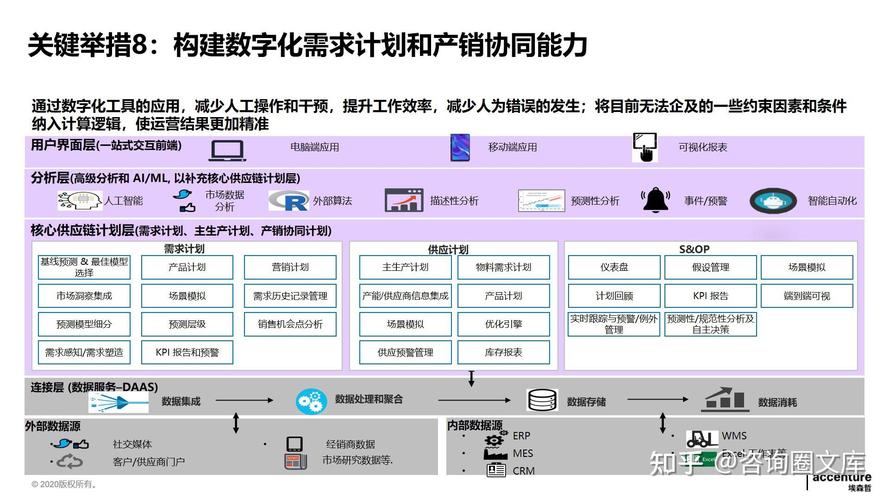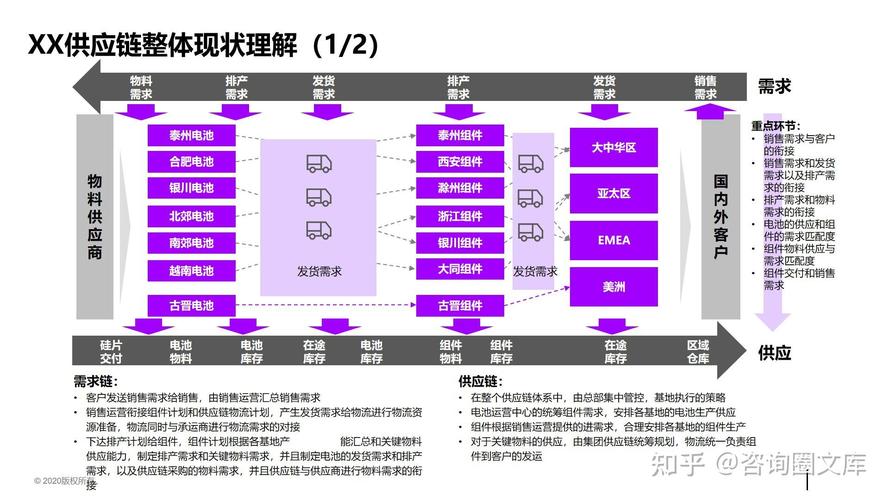S&OP: Sales and Operations Planning
Sales and Operations Planning (S&OP) is a strategic process that ensures alignment between sales forecasts, production capabilities, and financial objectives. By integrating these key elements, companies can optimize their operations, reduce costs, and improve customer satisfaction. In this article, we will delve into the intricacies of S&OP, exploring its purpose, benefits, and implementation steps.
Purpose of S&OP
The primary purpose of S&OP is to bridge the gap between sales and operations, ensuring that both departments are working towards common goals. By aligning sales forecasts with production capabilities, companies can avoid overstocking or understocking products, leading to improved inventory management and customer satisfaction.
S&OP also helps in identifying potential risks and opportunities, allowing companies to make informed decisions. It fosters collaboration between different departments, leading to better communication and coordination. Ultimately, the goal of S&OP is to enhance overall business performance and achieve sustainable growth.
Benefits of S&OP
Implementing S&OP can bring numerous benefits to a company. Here are some of the key advantages:
-
Improved Forecast Accuracy: By integrating sales forecasts with production capabilities, companies can achieve more accurate predictions, leading to better inventory management and reduced costs.

-
Enhanced Collaboration: S&OP fosters collaboration between sales, operations, finance, and other departments, leading to better communication and coordination.
-
Reduced Costs: By optimizing inventory levels and production schedules, companies can reduce costs associated with overstocking or understocking products.
-
Increased Customer Satisfaction: By ensuring product availability and reducing lead times, companies can improve customer satisfaction and loyalty.
-
Improved Decision-Making: S&OP provides a clear, unified view of the business, enabling better decision-making and strategic planning.

Implementation Steps
Implementing S&OP requires a structured approach. Here are the key steps involved:
-
Define the S&OP Process: Establish clear objectives, roles, and responsibilities for the S&OP process. This includes defining the frequency of meetings, the participants, and the decision-making criteria.
-
Collect and Analyze Data: Gather relevant data from sales, operations, and finance departments. Analyze this data to identify trends, patterns, and potential risks.
-
Develop Sales and Operations Plans: Based on the analyzed data, develop sales and operations plans that align with the company’s goals and objectives.
-
Review and Approve Plans: Present the developed plans to key stakeholders for review and approval. This ensures that all departments are aligned and committed to the plans.
-
Monitor and Adjust Plans: Continuously monitor the performance of the plans and make adjustments as needed. This ensures that the company remains agile and responsive to changes in the market.
Challenges and Best Practices
Implementing S&OP can be challenging, but with the right approach, companies can overcome these obstacles. Here are some common challenges and best practices:
Challenges
-
Data Quality: Ensuring the accuracy and reliability of data is crucial for successful S&OP. Companies may face challenges in collecting and analyzing high-quality data.
-
Change Management: Implementing S&OP requires a cultural shift within the organization. Employees may resist changes, leading to challenges in adoption.
-
Resource Allocation: S&OP requires dedicated resources, including personnel, time, and technology. Companies may face challenges in allocating these resources effectively.
Best Practices
-
Invest in Data Quality: Ensure that the data used for S&OP is accurate, reliable, and up-to-date. Invest in data management tools and processes to improve data quality.
-
Communicate and Educate: Communicate the benefits of S&OP to all stakeholders and provide training to ensure a smooth transition. Encourage open communication and collaboration.
-
Allocate Resources Appropriately: Allocate sufficient resources, including personnel, time, and technology, to support the S&OP process. Monitor resource utilization and make adjustments as needed.
Conclusion
Sales and Operations Planning (S&OP) is a powerful tool that can help companies optimize their operations
